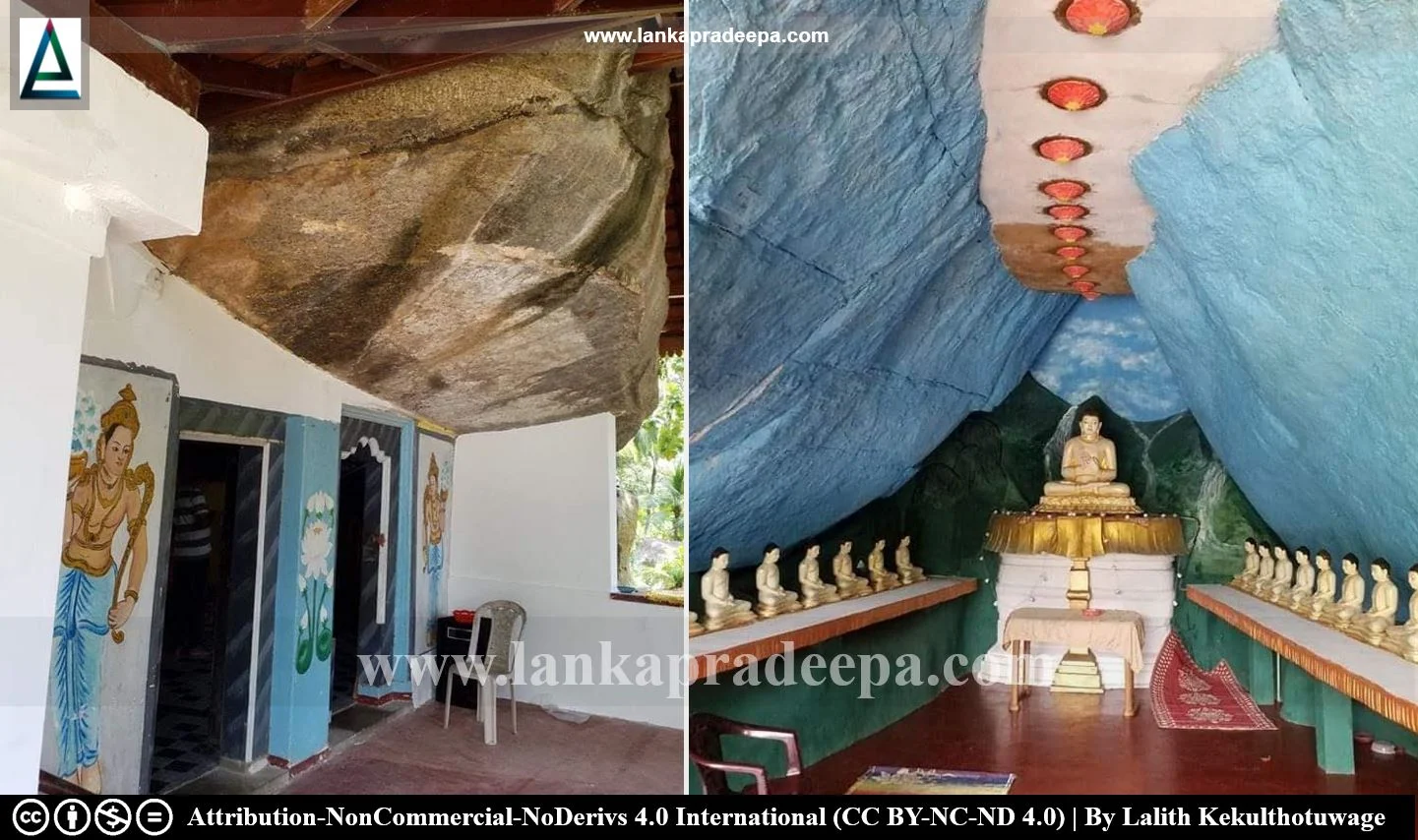Not to be confused with Devagiri Raja Maha Viharaya (Bingiriya), Devagiri Raja Maha Viharaya (Koggala) and Devagiri Viharaya (Medagoda)

Sri Devagiri Raja Maha Viharaya, also known as Devagiri Purana Gallen Viharaya or popularly Diyavini Raja Maha Viharaya (Sinhala: ශ්රී දේවගිරි රජමහා විහාරය, දේවගිරි පුරාණ ගල්ලෙන් විහාරය, දියවිනි රජමහා විහාරය) is a Buddhist temple situated near Diyavini Ella Falls in Ganelandagama village in Ratnapura District, Sri Lanka.
History
Locals believe that this temple was established by Yatalatissa (reigned in the 2nd century B.C.) in the early part of the Anuradhapura Period. A cave inscription belonging to the period between the 3rd century B.C. and the 1st century A.D. has been found on the temple premises.
Transcript: .......ha lene agata anagata catu disha shagasha
Translation: The cave of .......... (is given) to the Sangha of four quarters, present and absent
Citation: Paranavitana, 1970. p.58.
Translation: The cave of .......... (is given) to the Sangha of four quarters, present and absent
Citation: Paranavitana, 1970. p.58.
Another inscription belonging to the 6-8 centuries A.D. has been recorded at the site (Collins, 1932). Consisting of four lines within a frame, it gives some Sinhala and Tamil names probably of pilgrims (Collins, 1932). In a cave named Piyangiri Oya Galge located on the slope of the nearby mountain, there is another Early Brahmi Inscription belonging to the pre-Christian era (Collins, 1932).
A protected site
The ancient cave temple and two caves with drip ledges in the premises of Ganelandagama Diyavinna Devagiri Purana Gallen Vihara in the Grama Niladhari Division of Diyavinna in Balangoda Divisional Secretariat Division are archaeological protected monuments, declared by the government Gazette notifications published on 6 July 2007.
Attribution
#) LankaPradeepa.com extends its gratitude to Lalith Kekulthotuwage for providing the necessary photographs required for this article. All the photos are published here with the permission of the author.
References
1) Collins, C.H., 1932. The archaeology of the Sabaragamuwa Bintenna. Journal of the Ceylon Branch of the Royal Asiatic Society, Vol. XXXII, No 85. pp.158-184.
2) Paranavitana, S., 1970. Inscriptions of Ceylon: Volume I: Early Brahmi Inscriptions. Department of Archaeology Ceylon. p.58.
3) The Gazette of the Democratic Socialist Republic of Sri Lanka. No: 1505. 6 July 2007. p.549.
Explore Other Nearby Attractions
Location Map (Google)
This page was last updated on 18 November 2023

